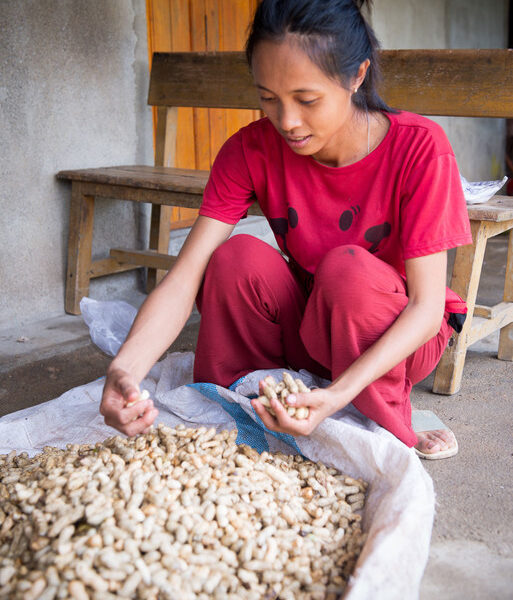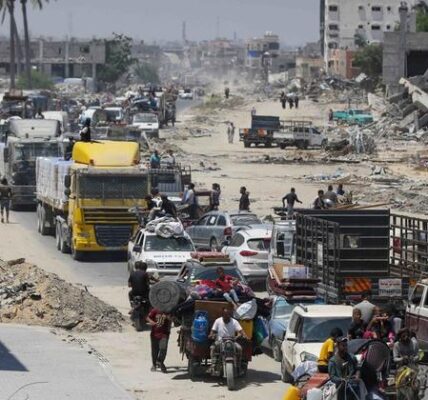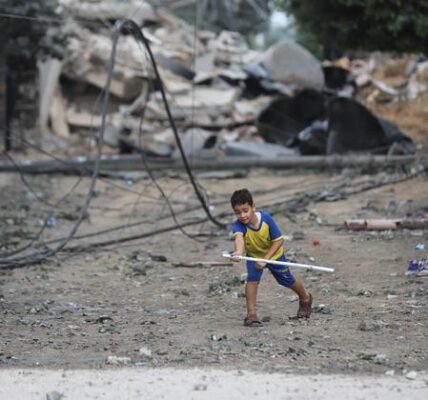“I was not aware that vegetables were that important or how to grow them,” said the 25-year-old farmer from Idas in West Kalimantan on the island of Borneo. “Now I do.”
She, along with 50 of her neighbours in this village among the rolling hills of northwest Borneo, received vegetable seeds and the opportunity to participate in a training course on how to grow tomatoes, cucumbers and peanuts, foods that should make their families less prone to diseases.
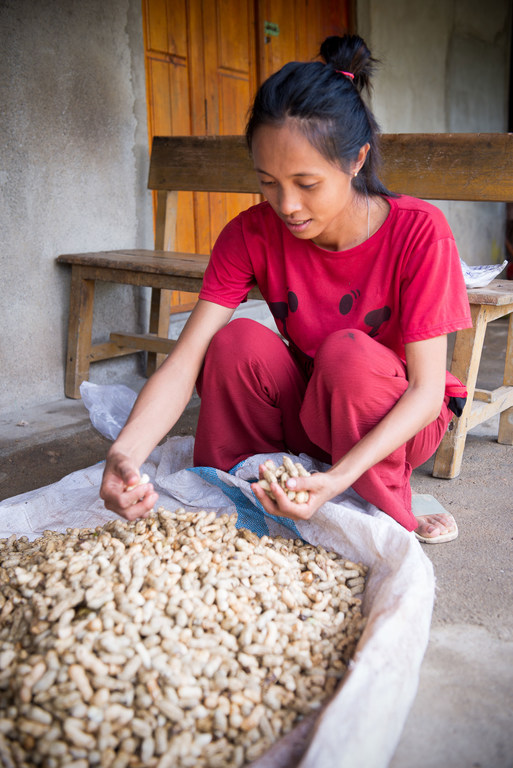
Kornelia Icha sorts through peanuts she has grown on her land.
Evidence, not intuition
Idas was one of just four out of 160 villages in the district targeted for government intervention thanks to data-based policymaking. Using a rigorous, data-focused methodology developed by the UN’s World Food Programme (WFP), the district’s Food Security Office published a recommendation to all local government offices to concentrate efforts on these settlements.
It supported the government’s aim of providing targeted assistance to prevent stunting, a condition to which chronic.
“Without research and hard data, even the best-intentioned attempts to decrease food security vulnerability are like a shot in the dark,” said Nur Affandi, Head of the Food Security Office in Singgau, the regional capital. “In order to target interventions correctly and create policy that really makes a difference, we must base our work on evidence, not intuition.”
Much of that evidence is presented through the Food Security and Vulnerability Atlas. Developed jointly by WFP and the National Food Agency, the atlas visualises key food security data for all 514 cities and districts in Indonesia, a vast country of 280 million people.
On it, each subdistrict and village is given one of six priority classes of vulnerability, based on indicators such as access to running water, the amount of agricultural land per person and access to a medical facility.
The composite index takes into account these various indicators and, based on that, automatically identifies which villages and subdistricts are vulnerable to food insecurity.
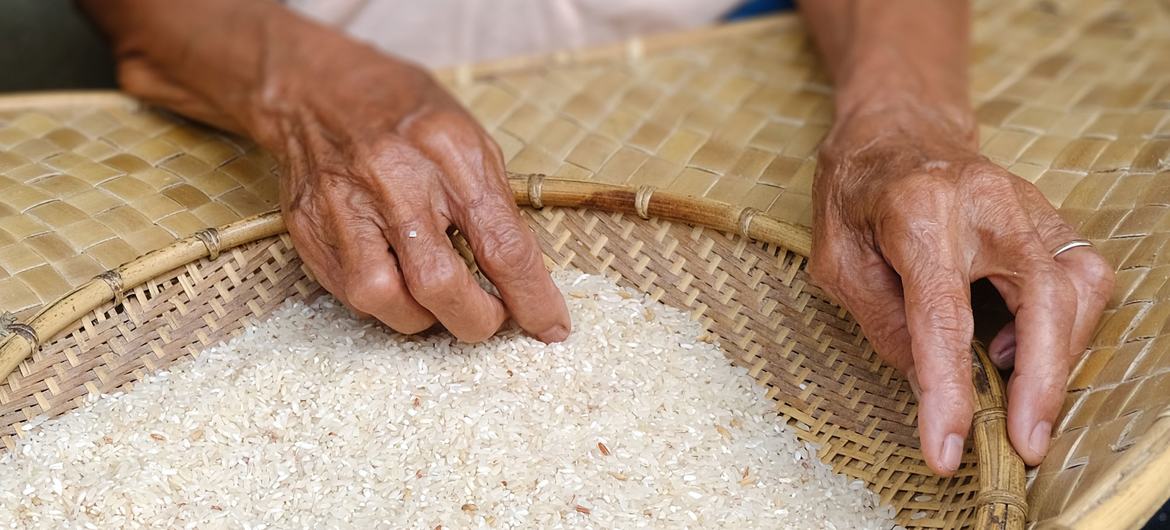
Rice is the staple food of many households in West Kalimantan.
In 2019, Idas fell into the priority one or “highly food insecure” category. Since then, the dirt road connecting it to main roads in the area has been partially repaired to ease villagers’ access to markets and therefore improve their overall economic condition.
Seeds have been distributed to families to help them vary their diets along with pepper plants to diversify their income away from reliance solely on rubber and palm oil. The few families who did not have clean running water are now hooked up to the village’s water system.
The result? Idas is no longer considered highly food insecure.
Thank science
“A major improvement,” a proud Mr. Affandi said with a broad smile. “It’s not thanks to us; it’s thanks to science.”
His approach of data-based policymaking is seen as a pilot to emulate, particularly in poorer areas of the country, such as East Nusa Tenggara province and its capital city, Kupang.
A Regent’s Decree prepared in 2022 by the Kupang district government, the Regional District Development Planning Office and WFP mandated all local authorities, including those in charge of health care, agriculture and social support, to use the Food Security and Vulnerability Atlas to target their food and social support. The province has over 309 subdistricts, 37 per cent of which were found to be vulnerable to food insecurity in 2021.
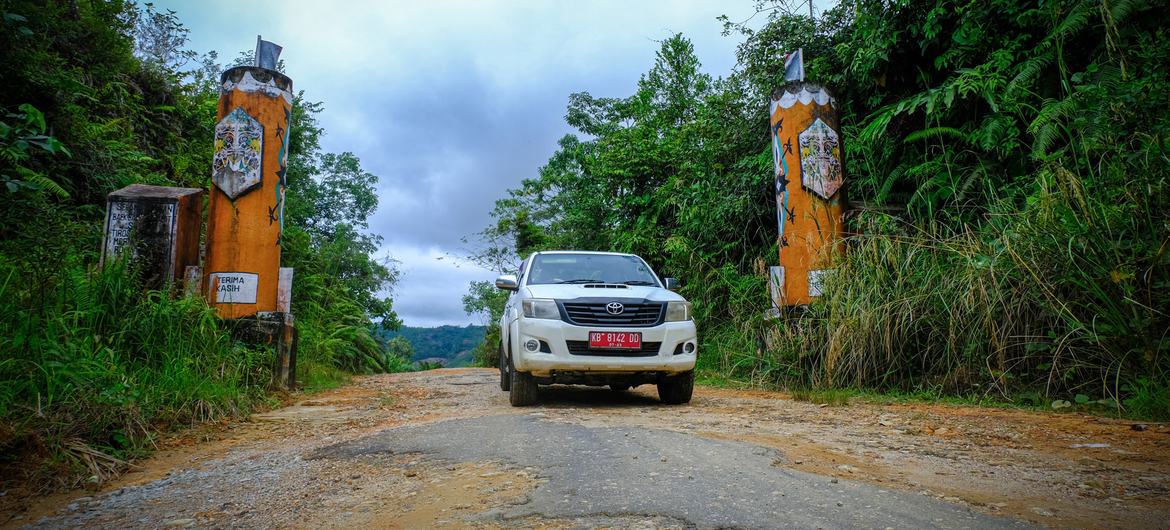
The rehabilitation of roads is essential to the development of the rural community of Idas.
In East Nusa Tenggara, more than 20 per cent of the population lives below the poverty line, and nearly 40 per cent of children under age five are stunted. Stunting prevents a child from reaching their full cognitive and physical potential.
Countrywide, just over 20 per cent of children under age five were stunted in 2022.
“Using the Atlas for planning enables us to refine our focus and target food insecurity interventions accordingly,” says Marthen Rahakbauw, Head of the Kupang District Regional Development Planning Office.
To-do list
While the progress is tangible, a lot of work remains to be done.
“WFP is supporting the National Food Agency to work with other cities and districts to also mandate the use of the Food Security and Vulnerability Atlas,” said Jennifer Rosenzweig, the acting Country Director for WFP in Indonesia: “We need more examples like Sanggau and Kupang districts to systematically reach people who are most vulnerable to food insecurity across the country.”
For Kornelia Icha, who says she can only afford to eat what she and her relatives can grow themselves, the vegetables make a major difference in her diet.
Her and her husband’s base income comes from selling the milky latex they extract from around 200 rubber trees; this earns them around 60,000 Indonesian rupiah ($4) a day, which is supplemented by income from odd jobs and the occasional sale of peanuts.
“We are not poor,” she said. “But, we could certainly never eat as many vegetables as we do now after we started growing them.”
Source: news.un.org
